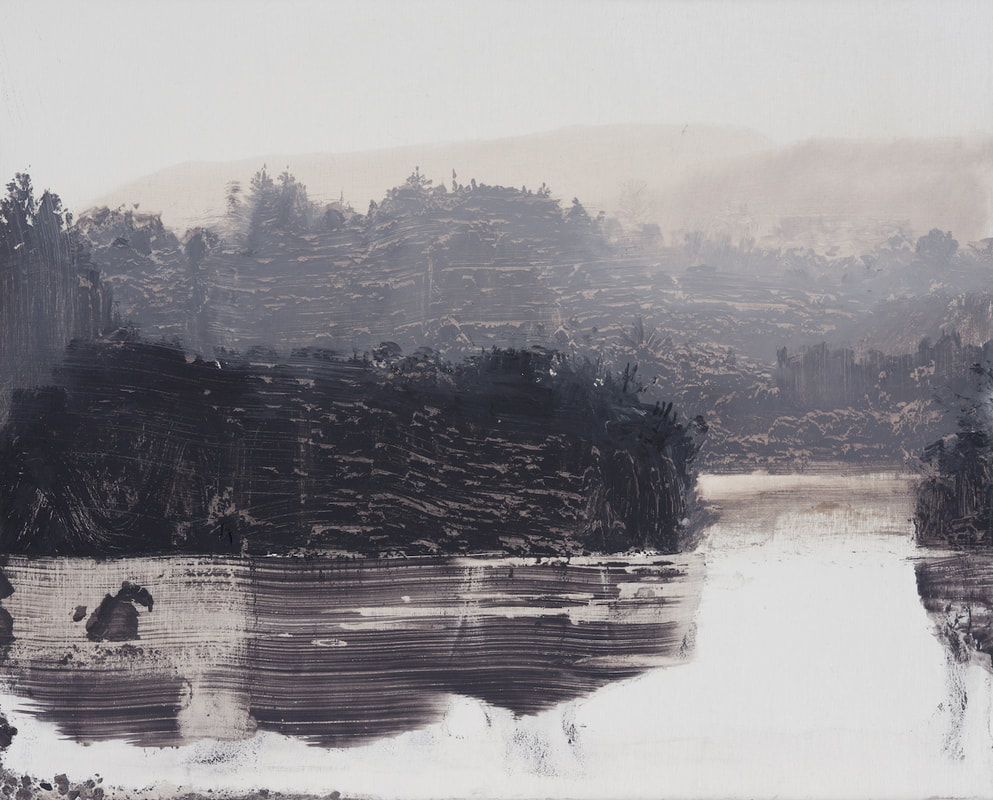David Smith’s material magic

Lakeside-sunglare, oil on birch ply, 8×10 inches, 2019
I recently received my copies of INPA 8, from Manifest Creative Research Gallery, and I’ve been finding much to admire in its pages. I’m going to post some of the work over the next few weeks. It was especially pleasant to see David Smith represented yet again. He’s pitching almost a perfect game since Manifest started publishing INPA: getting his work into, I believe, all but one of the annual compilations of great contemporary painting. He used to have his studio in Hong Kong, which was appropriate, since in most of his work there’s a very Asian sense of unoccupied space, a philosophical void. As in the work of Clifford Still and Sam Francis, that sense of vacancy has as much to do with the effect of his images as whatever emerges from the emptiness. It links his work as well with sumiye painting and Chinese scrolls. It’s a Taoist esthetic that he doesn’t address candidly in his own statements about his work, though what he does say about his process echoes the principles of gutai, which finds new forms of creative expression by exploring the effects and properties of physical materials, again an Asian tradition, but out of Japan, rather than China.
From his website:
These paintings depict natural forms and spaces on solid, wood panels. They use the chemical qualities of oil washes to disrupt, dissolve or decay the image surface. Light, space, time and environmental decay play against natural elements. The images exist in a state of flux; location and time are not always apparent. The light, space and forms are shifting, living and dying, displaying a fragile and temporary nature. Influenced by ink painting, abstraction and photography, they aim for a sense of the mysterious and the elemental.
I recall the earliest work of his I saw in some of the initial INPA publications, work from nine or ten years ago. It showed a helicopter or jet suspended in fog, giving me the sense of being an entomologist discovering an unclassified caddis fly, with human technology seemingly as evanescent as a newly hatched insect. Having moved back to Ireland, he has evolved a process that, more than ever, prompts me to ask a question I emailed to Jason Franz years ago, knowing there would be no answer on the other end: “How in the world does he do that?”
I suspect there may be some originating step using the transfer of a photographic image onto his support, which is then worked by hand, the way R.H. Quaytman begins by silkscreening a Polaroid image onto a surface and then improvising on it with other materials. It’s possible, but the evidence of his brush is often so distinct that he doesn’t seem to be working from a transferred photographic template. Whatever he’s doing, I’ll bet he doesn’t want to talk about it in detail. I wouldn’t. He should consider his techniques proprietary. Like Quaytman, Smith reduces his image to the simplest possible interlocking layers of differing values—usually eliminating almost all color other than dark-to-light grays. The effect is wondrous: it’s as if he creates an astonishingly convincing landscape that recedes into a more and more atomized haze, each tier of earth or trees or water inhabiting its own particular distance from the eye. In some of the most recent work this year, he shows land masses rising from a remote lake, and these forms could be rock or trees or both, it’s hard to tell, and yet without being able to actually identify what you are seeing, the image looks perfectly real, even with the long parallel lines clawed into the paint, as if with a comb, on the shining surface of the lake. The effect is to make you feel a sense of convincing verisimilitude, true to dawn landscapes you’ve seen in the past, while at the same time introducing you to an entirely imaginary world, an almost abstract collage of shapes, where the scraped and squeegeed-looking ridges of paint somehow magically are both an inert substance disrupting a flat surface and yet exactly what the eye needs in order to seize on a perfectly-rendered, natural vista.
Comments are currently closed.